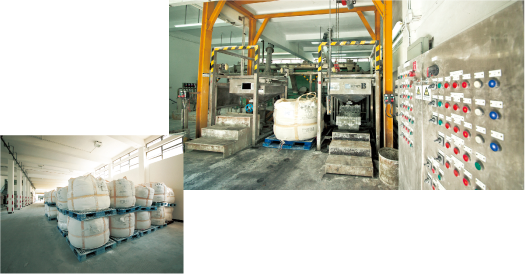- Main
- Vision, Values & Mission
- Corporate Profile
- WSD Organisation Chart
- Events in Brief
- Director’s Statement
- Key Performance Indicators
- Total Water Management Strategy
- Water Supply Management
- Water Demand Management
- Waterworks Infrastructure
- Finance and Water Charges
- Sustainable Operations
- Focusing on Customer Service
- Shaping Our Future
- Appendices and Annexes
- Download full report
(PDF 22MB)

Expanding Water Supply Capacity
The Department has actively explored methods for new water resources that are less sensitive to the impact of climate change. In 2012, we began a planning and investigation study for constructing a desalination plant in Tseung Kwan O by 2020 to cater for 5% (expandable to 10%) of our total fresh water demand. The study will largely be completed in early 2015.
As part of our efforts to improve and expand water-related infrastructure, we are now upgrading the sea water supply system to meet the increased demand for flushing water in Wan Chai, Central and the Mid-level districts. The Department is also currently re-provisioning the Wan Chai Salt Water Pumping Station, plus we’re adding a new salt water service reservoir on Magazine Gap road along with an additional salt water pumping station on Bowen Road and 7km of new salt water mains.
Water demand for the low and mid-level areas of Central is set expand significantly as well in the near future and the Department is responding by enlarging total storage capacity of the reservoir group that supplies these areas through the construction of a new fresh water and service reservoir (FWSR). In addition, we will build a new FWSR at the Brewin Path Temporary Playground near to the present FWSR. As a consequence, we will retire the existing Albany reservoir which has been in service for nearly 60 years. After completion of the entire project the Department will design and construct a new playground on the roofs of these new service reservoirs.
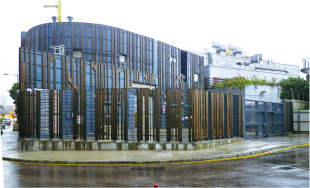
-
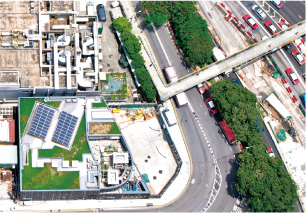
Wan Chai No. 2 Salt Water Pumping Station
Sheung Shui and Fanling will also see service upgrades following the construction of a new service reservoir with an associated trunk and distribution system to meet the needs of the expanding number of housing developments in the area.
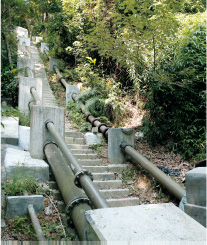
New salt water mains at Magazine Gap
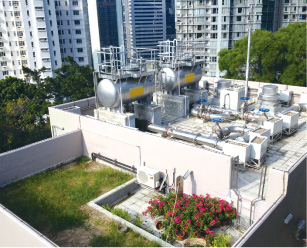
Bowen Drive Salt Water Pumping Station
Upgrading Water Treatment Facilities
Both the Sha Tin and Tai Po Water Treatment Works are currently in the planning and construction stages of major capacity increases. These two facilities are important centres for the treatment of raw water prior to its distribution across Hong Kong. Re-provisioning work will be carried out at the Sha Tin plant while Tai Po will undergo a major expansion of its capacity and operations. Both projects will help ensure adequate capacity to produce the highest levels of potable water for the public. These projects are being carefully planned in phases to match closely the greater demand for water throughout the Territory.
Once its facilities upgrade is completed in two phases the Tai Po Water Treatment Works will see its capacity increase from 250 000 to 800 000 cubic metres per day at a total investment cost of HK$5.6 billion. Phase one has been completed and is now processing 400 000 cubic metres of water per day. Phase two began in 2013 will see an eventual capacity increase to 800 000 cubic metres per day by its commissioning date in 2017. The in situ reprovisioning of the Sha Tin facility has begun and will be commissioned sometime by the 2020s.
Replacement and Rehabilitation Works
To reduce leakage, the Department is implementing a territorywide Replacement and Rehabilitation (R&R) programme to replace and rehabilitate about 3 000km of the 8 400km water mains for completion by 2015. The water main leakage rate will be reduced from 25.8% in 2003 to 15% in 2015 upon the completion of the R&R programme.
-
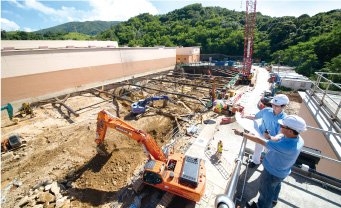
Expansion works in Tai Po Water Treatment Works
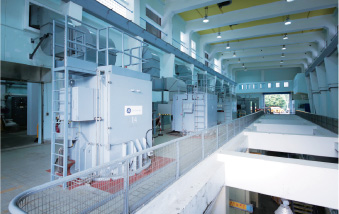
-
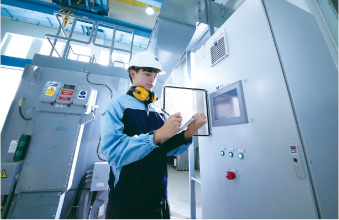
New pumpset in Sha Tin Water Treatment Works
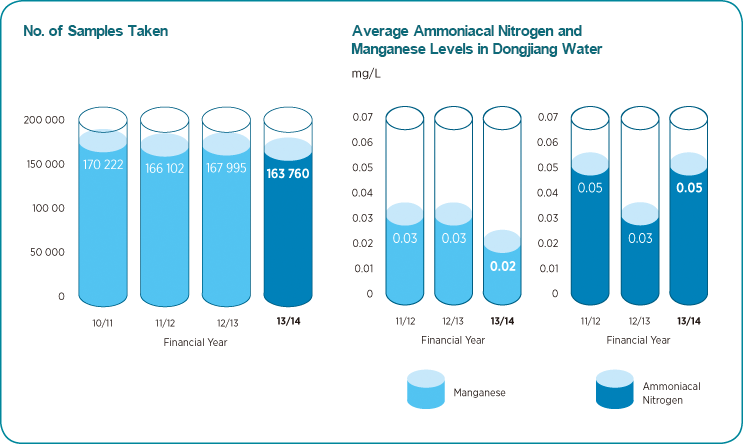
Improving Waterworks Operational Efficiencies
The Department has upgraded the supervisory control and data acquisition (SCADA) system we use to remotely monitor all pumping stations and service reservoirs from four regional control centres. This has been carried out to enhance system resilience. We also apply advanced virtualisation technology to improve system availability and hardware independence. In addition, for all personal computers, tablets and smartphones that operate on varying platforms, we are have switched over to open source software. As a result, now our staff can access real time data and historical SCADA information anywhere, anytime using a simple web browser to raise the level of work efficiency.
After receiving a thorough condition assessment, the Department has gone ahead with improvement programmes for a number of pumping stations that are deemed in need. Specifically, we have replaced power supplies at the pumping stations at Sha Tin No. 2, Fanling and Sheung Shui. In addition, we have begun replacing pumps and valves at the Tseung Kwan O Salt Water Pumping Station and the station pipe works system at the Sheung Wan, Tai Po and Kowloon South No. 2 Salt Water Pumping Stations in order to upgrade their operational efficiency and reliability.
Because many water treatment plants have been in operation for decades, it is necessary to undertake improvement work on their equipment in order to maintain reliable and adequate supplies of drinking water. In addition to modernising the DCS and control equipment in the water treatment works to improve plant safety and reliability, the Department will also install new lime handling systems using jumbo bags, plus renovate aging power supply systems and replace filter backwashing and sludge de-watering facilities.
Chlorine scrubbers, which control leakage of chlorine gas into the atmosphere in the unlikely event of a system failure, are protective devices to keep water treatment works operating safely at all times. The Department is currently replacing the chlorine scrubber system at the Silver Mine Bay Water Treatment Works to modernise its operations. Similar upgrades will be initiated at Yau Kom Tau Water Treatment Works and other key water treatment works to ensure reliable operations when needed during an emergency situation.
Optimising Waterworks Assets
At the WSD our goal is to manage the life cycles of all water services infrastructure in order to achieve the optimal level of service in the most cost-effective manner within an acceptable risk framework.
During the past year we completed four surface asset management plans which identify the performance and physical condition of nearly 900 waterworks installations. Once an area of improvement has been identified we prioritise this for implementation during the coming years. Our staff routinely inspects 6 500 slopes and carries out subsequent preventive maintenance work and upgrading projects to more than 80 slope features near important installations. The work our Department undertakes includes soil-nailing, slope surface stabilisation, construction of toe planter walls, improvements to water drainage systems, providing safe access corridors, carrying out planting operations, and other work. The result of all these efforts has been a dramatic decrease in the risk of landslides as well as the danger they pose to life and property.
Work is almost finished on recent Reliability Centred Maintenance (RCM) programmes for two key pumping stations and water treatment works. In future, we will continue to carry out RCM studies on all major installations and apply review recommendations to further refine our maintenance strategies for mechanical and electrical assets.
The Department also completed mechanical and electrical assessments for one water treatment plant and six pumping stations. We will continue to conduct these assessments on an ongoing basis for developing and updating our asset management plans.
An optical Fibre Bragg Grating (FBG) for monitoring sensory systems was developed and has been implemented to monitor a segment of the 200-metre long underground Glassfibre Reinforced Plastics (GRP) Dongjiang Water Main. After careful observations for nearly a year, the performance database of the pipe without water has been set and monitoring of the structural integrity of the pipe with water is now underway.
-
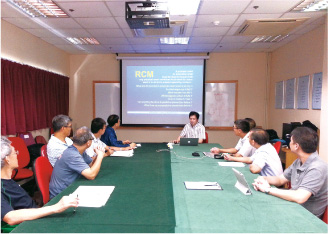
Reliability Centred Maintenance (RCM) meeting at Pak Kong Water Treatment Works
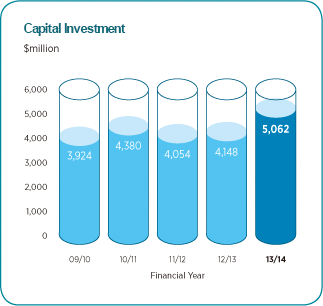
-
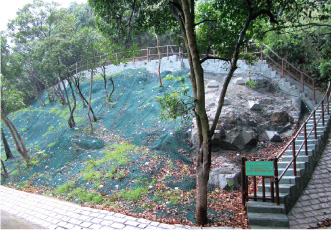
Slope at Reservoir Road, Pok Fu Lam
-
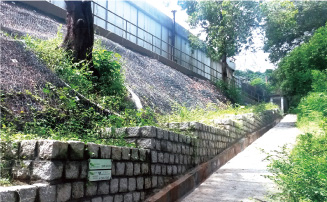
Upgrading works of the slope at Kau Wah Keng, Kwai Chung has been completed almost a year
Sign plate of WSD’s slopes
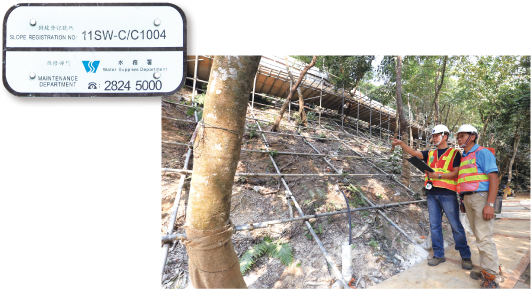
Site supervision of the slope upgrading works at Beacon Hill, Shatin
Water Supply Crisis Management
To safeguard reliable and adequate water supplies, it is essential for the Department to prepare for any unforeseen situations affecting water supplies in the water supply system. For this reason, we have a crisis management plan and several contingency plans drafted to maintain a state of readiness for the rapid mobilisation of resources and coordination of emergency actions.
In addition we have developed a Drought Contingency Plan (DCP) as an adaptive measure to counter the impact of climate change on water resources in order to ensure water security to meet the basic needs of Hong Kong in the event of an emergency. The DCP was formulated to guarantee our readiness in response to an emergency situation and efficiently mobilise resources in the event of severe drought either in Hong Kong or on the mainland which could immediately affect fresh water supplies and treated water in Hong Kong.
Water Quality and Health Standards
Guangdong authorities have taken effective steps to ensure that the quality of Dongjiang water that reaches Hong Kong meets all relevant national environmental quality standards. This has been carried out through a combination of measures and projects including the construction of new sewage treatment plants, removal of polluting factories and farming, commissioning of dedicated aqueducts and on-going operations of a bio-nitrification plant at the Shenzhen Reservoir. Moreover, we also maintain an on-line Water Quality Monitoring System that runs via an advanced SCADA system at the Muk Wu Pumping Stations to closely gauge the quality of imported Dongjiang water around the clock. We have also implemented a Water Safety Plan to control and prevent risks of contamination of drinking water from sources to distribution and safeguard the quality of the drinking water supply in Hong Kong for public health protection. The Department has also pioneered the application of Zebrafish to detect abnormalities in raw water. By closely monitoring the behaviour of the Zebrafish in the raw water, the Department can quickly spot potential water quality problems and take appropriate countermeasures.
-
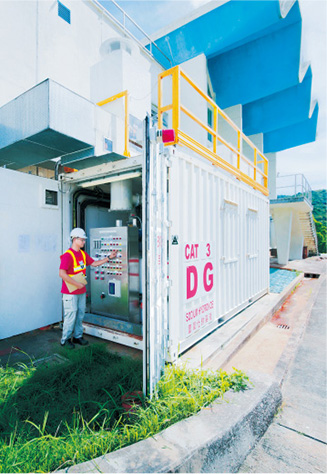
Temporary Chorine Scrubber system at Silver Mine Bay Water Treatment Works
New lime handling system using jumbo bags in Tuen Mun Water Treatment Works
